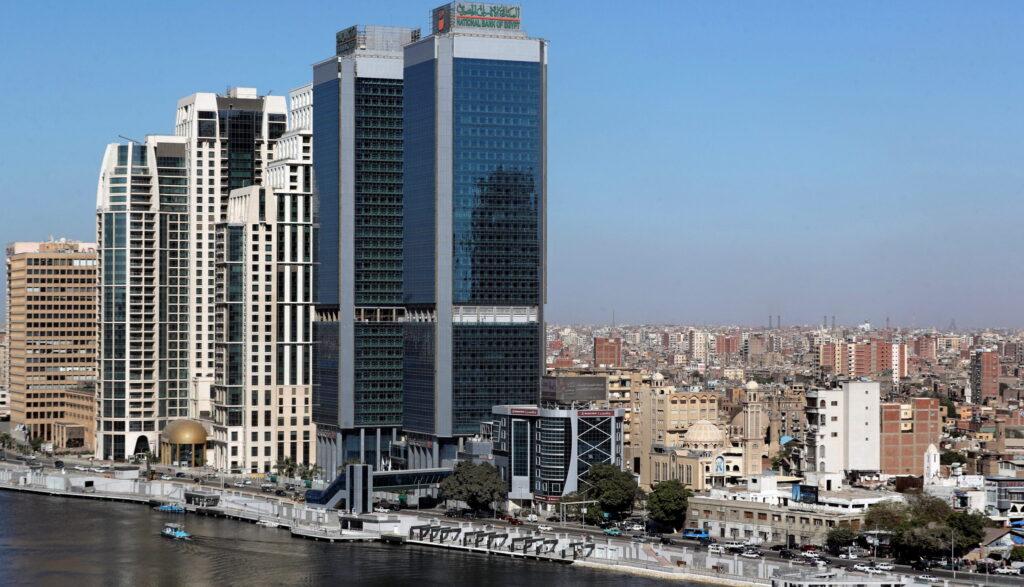Africa-Press – Lesotho. Egyptian banks have proven to be robust in the face of the pandemic, owing to government backing in different forms as well as favourable conditions.
The same dynamics are also paving the way for substantial improvements in the banking sector, which is now more willing to adopt state-of-the-art solutions and be better prepared for crisis management.
Monette Doss, chief economist and head of macro and financials at Egyptian investment bank HC Securities, thinks that core indicators have been anything but alarming since the virus outbreak in February 2020.
“The Egyptian banking sector is highly regulated, with relatively high capital adequacy ratio (CAR) requirements, low non-performing loans (NPLs), and high provisioning,” she tells The Africa Report.
“The Egyptian banking sector is also highly liquid, with investments in government treasuries representing circa 48% of the sector’s deposits.
We believe that these factors together helped the sector absorb the negative consequences of the outburst of Covid-19. ” High-yield government treasuries helped support the banking sector’s margins during 2020 and 2021, Doss says.
Yet HC foresees a decline in treasury yields over the course of five years, expecting it to cause banks’ net interest margins (NIMs) to slip from a 2017-2021 average of 6.0% to 4.5%-5.0%.
“We, however, expect the growth in lending to the private sector to promote banks’ profitability through higher service fees and commissions,” Doss says.
Speaking to The Africa Report, Shihab Helmy, senior equity analyst at investment bank Prime Holding, says he expects treasury yields to remain “relatively high”. He also cites “weaker-than-expected global trade” as a negative trigger that will “delay the recovery in banks’ fees and commissions income”.
Doss downplays the current rise in Covid-19 cases in Egypt amid slow vaccinations, thanks to a gradual tourism recovery on the back of the resumption of Russian flights to the Egyptian Red Sea resorts, and the recent removal of the Arab state from the UK’s red list.
“We accordingly expect to see improved employment rates, with a positive spillover on consumption spending and utilisation rates,” she says.
“We expect, therefore, capital expenditure lending to kick off by the beginning of 2022 as opposed to working capital loans in 2021.
The Central Bank of Egypt’s (CBE) initiatives offering subsidised loans to different sectors – including tourism, industry, contracting, and agriculture – “helped promote loan growth while compensating participating banks with the difference between the subsidised rate and mid-corridor rate plus 2%”, Doss says.
Shihab, for his part, notes that even though the CBE initiatives contributed to lending growth last year, “real estate and tourism lending did not show high growth”.
He says “lending growth is expected to improve by 2022, particularly on the retail side”. “That said, SMEs drove credit growth in 2021 as banks work towards their CBE-induced target of 25% of loan books,” he says.
Onerous efforts by the CBE to increase the banking sector’s penetration rate by targeting the C and D income groups through digitalisation will result in cost-cutting measures and e-solutions, Doss says.
Two-thirds of Egypt’s 102-million population are unbanked. The Egyptian banking sector is resuming its growth and increasing its inclusion efforts as the pandemic negative effects are gradually diminishing.
Sherif Samy, the non-executive chairman of Commercial International Bank (CIB), Egypt’s largest private lender that was ranked 16th continentally both in 2019 and 2020, believes that Covid-19 has been a two-edged sword for the Egyptian banking sector.
On the one hand, it hampered the 2020 economic activity, which in turn took a toll on banks. On the other hand, however, the pandemic has greatly boosted fintech, a trend that bodes well for the banking sector’s outlook.
“We witnessed a significant increase in using online banking, digital payments channels and cards,” Samy tells The Africa Report.
“Actually, this leap on the payments front, converted a large number of reluctant bank clients to become more comfortable with such channels.
“The Egyptian banking sector is resuming its growth and increasing its inclusion efforts as the pandemic’s negative effects are gradually diminishing,” says the former head of Egypt’s Financial Regulatory Authority.
“Additionally, I believe in light of the experience over the past year and a half, there will be more aggressive investments in digitalisation and also in cybersecurity as a risk mitigation tool.
Three months after the financial year 2022 – which ends on 31 December for most Egyptian banks and on 30 June for a handful of others – each bank will have submitted a plan to address adverse situations and ensure resilience under dire circumstances.
These plans, which will touch on numerous aspects of banking operations pursuant to the CBE directives, partially pertain to preemptive strategies for crisis management, an area where the Egyptian banking sector has come a long way since the pandemic.
“Before Covid-19, crisis management, if [it] ever existed at any bank in Egypt, would be only on paper,” a banker, who spoke on condition of anonymity because he is not authorised to speak to the media, tells The Africa Report.
“Today, by the order of the CBE, they have concrete strategies and action plans to deal with different scenarios and not only a pandemic,” he says.
“The idea is to operate during any kind of disaster with minimum resources and requirements.
Among the steps to mitigate possible Covid-19 risks was withholding shareholders’ dividends, as decided by the CBE last January, Prime Holding’s Helmy says, adding that the move “helped support banks’ capital bases, providing them with more liquidity for profitable opportunities”.
Helmy believes two types of Egyptian banks are the most likely to rebound: banks with low-cost funds, such as Islamic banks, and those with large corporate lending portfolios, including CIB and QNB Alahli.
Doss of HC hails CIB as “one of the banks set for dynamic growth going forward, due to its large capital base, sound asset quality, [and] conservative provisioning over the last two years, which reduces the need for elevated provisioning going forward.
This is in addition to its wide branch network, and strong management track-record”. CIB, whose 2020 profit was a bit over $649m, is Egypt’s third largest bank, right behind Egypt’s two biggest state banks, the National Bank of Egypt (NBE) and Banque Misr, whose income last year stood at nearly $831m and $701m, respectively.
An expected positive trigger for private banks, Shihab says, would be improved deposits “on the back of easing pricing competition with state-owned banks” and “credit growth volumes, supported by SMEs”.
The banking recovery, overall, will be “on the assets side”, Shihab says. “It will be in terms of lending and financial investments growth, which would support net interest income, while lower provisions build-up would support profitability.”
For More News And Analysis About Lesotho Follow Africa-Press






